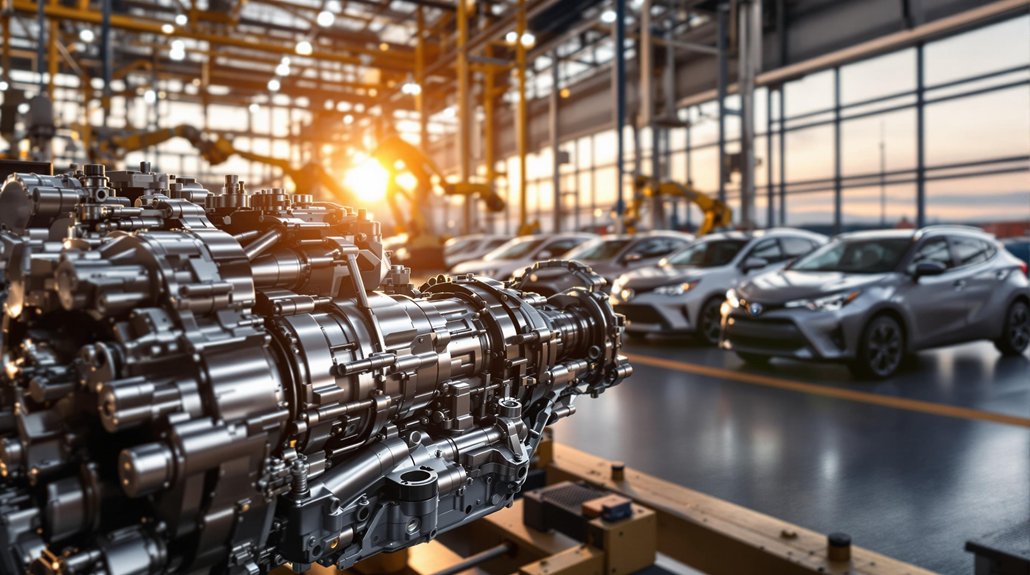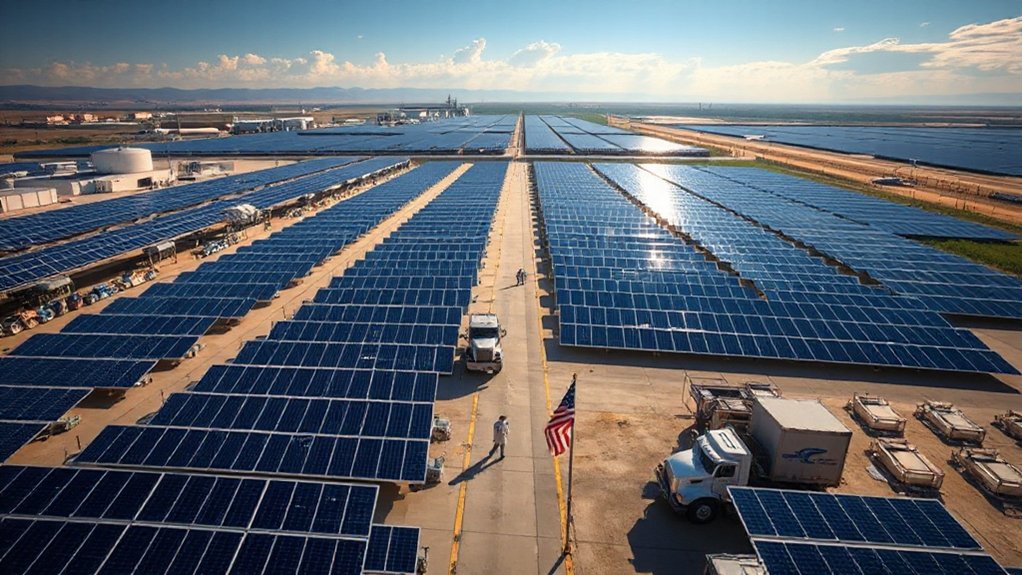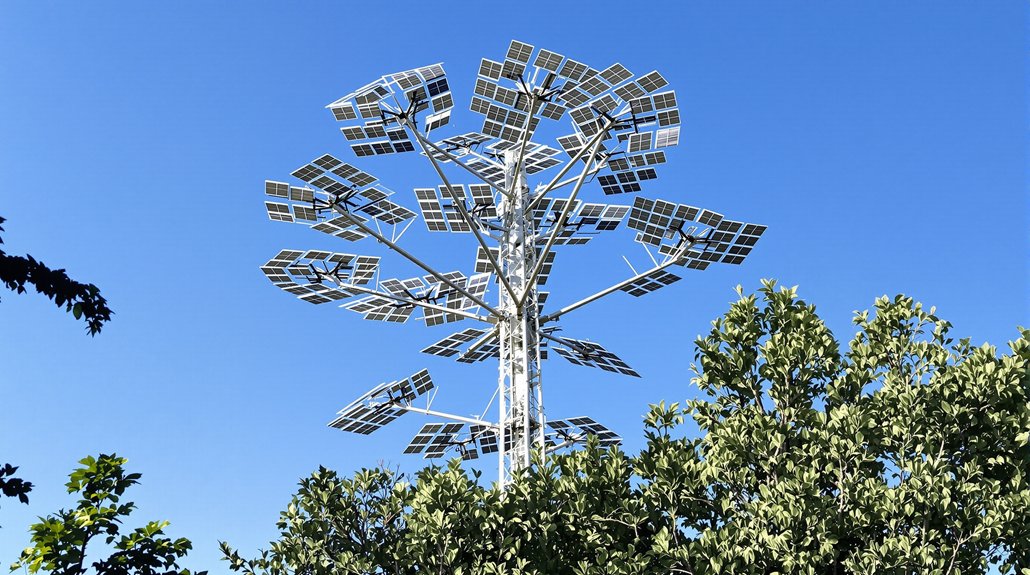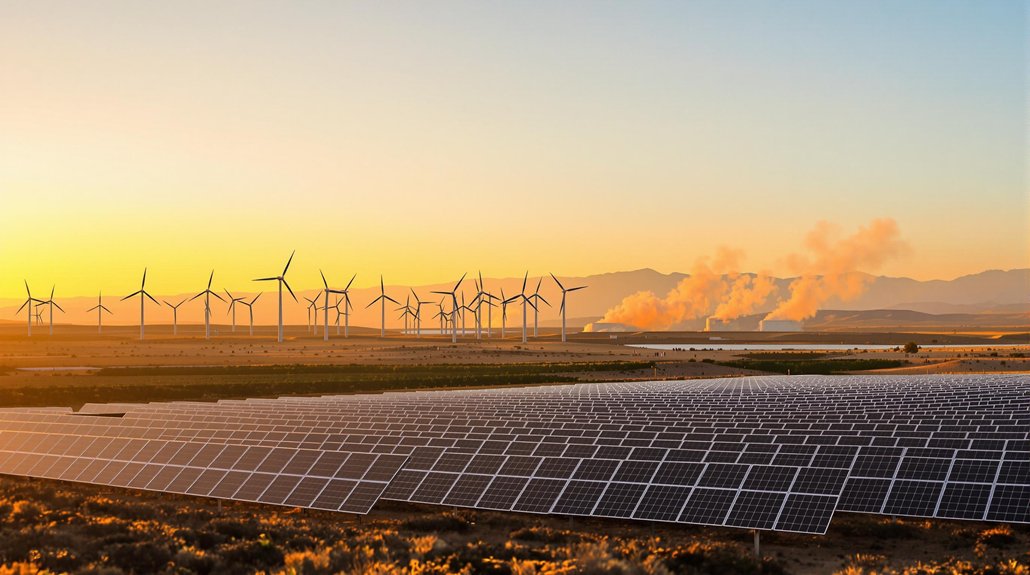Austria’s 20% bonus for European-made solar panels is shaking up the clean energy scene. The incentive has shifted buyer preferences toward local products, reducing supply chain headaches and boosting regional manufacturers. Europe’s solar market, already valued at $63.1 billion, stands to double within a decade. Companies like AE Solar and JUWI are riding this wave with innovative technology. The continent’s push for energy independence just got a serious jumpstart.
Nearly all European solar manufacturers are seeing unprecedented growth as the continent’s solar market skyrockets to a staggering $63.1 billion valuation in 2024.
And why shouldn’t they? The market’s projected to hit $127.3 billion by 2034. That’s serious cash flowing through an industry that was barely on investors’ radar a decade ago.
Austria’s new policy is the talk of the industry. A 20% bonus for European-made solar panels? Genius. Suddenly, Asian imports don’t look so attractive.
European manufacturers are scrambling to ramp up production as buyers pivot to “Made in Europe” modules. Less shipping, fewer supply chain nightmares, and a fat government incentive? No-brainer.
The numbers don’t lie. Europe installed over 65.5 GW of solar capacity in 2024 alone. Next year? Expect another 10% jump.
Solar has gotten dirt cheap, too. Panel prices have plummeted 90% in ten years. Grid parity isn’t some distant dream anymore—it’s reality in many European regions.
Companies like AE Solar, Goldbeck Solar, and JUWI are riding this wave all the way to the bank. They’re not just making panels; they’re packaging them with fancy grid-balancing features and remote monitoring.
The technology keeps getting better. Perovskite cells? Flexible panels? The future looks blindingly bright.
Government support isn’t just talk. The European Investment Bank is throwing serious money at solar projects. North Macedonia just scored $24.45 million from EBRD.
Even local governments are getting in on the action.
Let’s be real—this isn’t just about saving the planet. Europe wants energy independence, badly. Relying on foreign energy sources? That experiment didn’t end well.
In Germany, the solar market has expanded dramatically, reaching USD 18.4 billion by 2024 and commanding an impressive 29% share of the European market.
Despite recent successes, European manufacturers continue to face profitability challenges due to intense competition from low-cost Chinese imports flooding the market.
Now policies are shifting, coal is dying, and solar is the golden child of European energy. This follows the historic shift in the United States where renewables have surpassed fossil fuels in power generation for the first time.
For European manufacturers, the message is clear: your time in the sun has finally arrived. The continent’s bold move toward solar dominance is no longer just ambitious talk—it’s happening, and it’s happening fast.
References
- https://www.gminsights.com/industry-analysis/europe-solar-pv-market
- https://www.pv-magazine.com/2025/01/10/european-solar-market-2024-2025-balancing-growth-challenges-and-opportunities/
- https://www.globenewswire.com/news-release/2025/04/14/3060984/0/en/Europe-Solar-EPC-Market-Forecast-2025-2034-Germany-Leads-Europe-s-Solar-EPC-Boom-as-Market-Surges-at-6-4-CAGR.html
- https://www.globenewswire.com/news-release/2025/04/11/3060002/0/en/Europe-Solar-PV-Market-Report-2025-127-3-Bn-Opportunities-Growth-Drivers-Industry-Trend-Analysis-and-Forecasts-2021-2034.html
- https://www.pvo-int.com/en/european-solar-market-update-2025/








